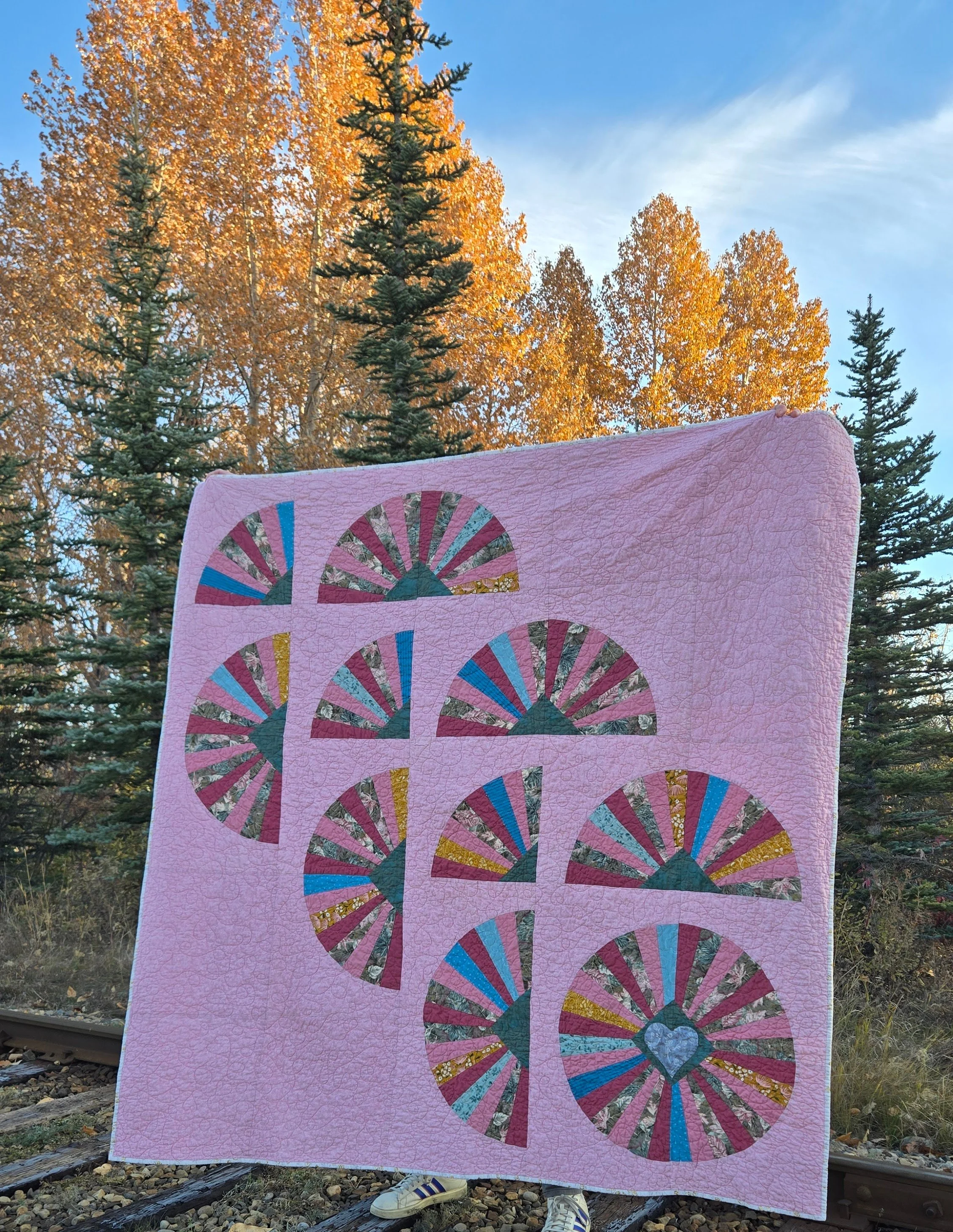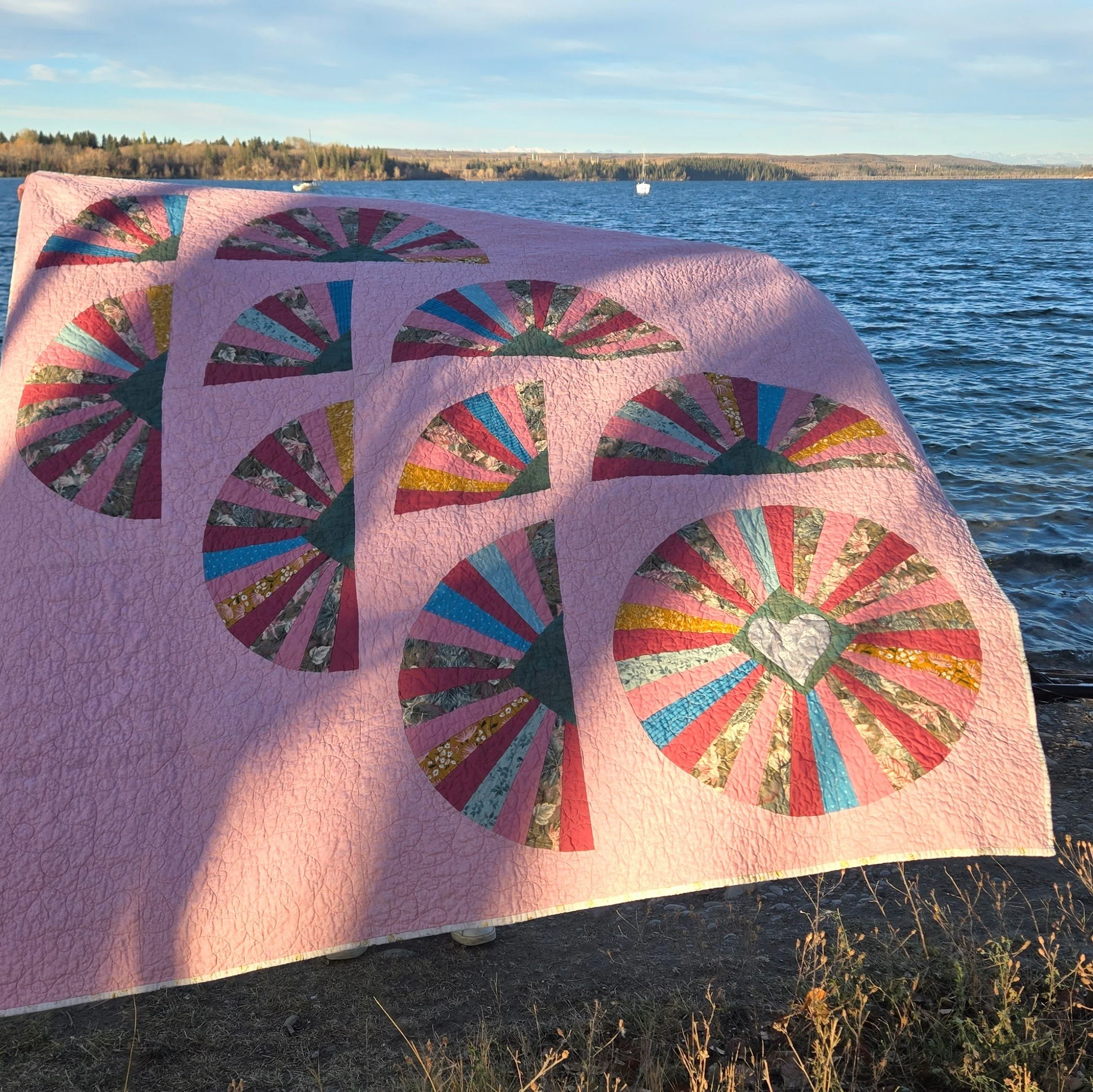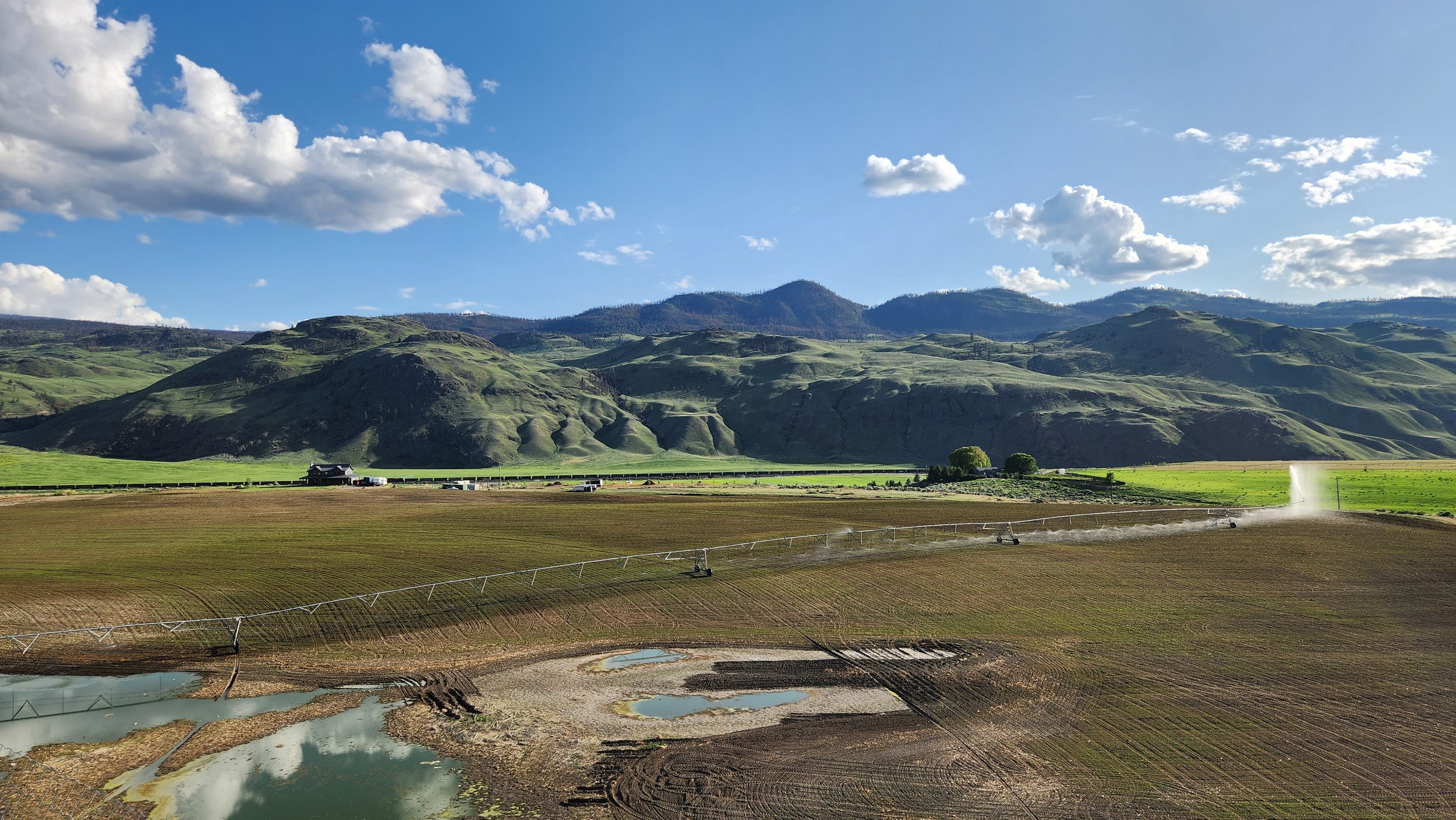Lynn
75” x 75”
A gregarious creature. With a smile and a laugh that made everyone feel welcome. Loving mother, grandmother, wife, sister, and friend. She gave and gave and gave. She also started and started and started. Never met a craft she didn’t like! Loyal, kind, generous, and funny.
Lynn was a real women, a bright soul in the lives of our extended family. Sadly, she passed away this spring. She was my MIL’s best friend, my husband’s ‘aunt’, our friends’ mom. We all really miss her.
At the funeral in May I met her younger brother for the first time. Another larger than life soul! He messaged me a few weeks after the funeral asking me a huge favour. You see, he had these blocks, quilt blocks, that Lynn had sewn together. Really, it was the start of a quilt intended as a wedding present 25 years ago. She never finished it. Would I finish it for him?
This is what I was sent. That’s some late 90s glory right there! I had a handful of almost finished blocks (missing the corner quarter circle), some sewn elements, some cut pieces, and extra fabric. No pattern, no note, no original plan for the blocks. Lance - Lynn’s brother - gave me free rein. He really just wanted something that he and his wife could snuggle with, made from the blocks Lynn started.
I played with a number of layouts to begin with. I tried to imagine what Lynn might have been planning. I took stock of what I had. It was clear I was going to need more fabric, first off. There was plenty of that dusty rose background, but not enough of the arc fabric to make many more blocks. So I added some colour - more greens, teal, and mustard - to modernize and round out the printed pieces of the arcs. This also enabled me to make more arcs. I was then able to use the cut background pieces and cut even more to play with. And rather than try to match the curve cut in the corners, I used a triangle piece to change up the block a little.
It probably isn’t a thing like Lynn intended, but I do know she would appreciate it. She was always very supportive of me and my quilting. And she did have an appreciation for modern.
One thing Lance did ask for was a heart. The blocks did not really lend themselves to that layout, but I added in this applique heart - in silver for the 25th wedding anniversary - as a special surprise. The machine quilting also included hearts in the loop-de-loops.
Sometimes the shadows just hit right.
After I sent the quilt to Lance and his wife they responded so kindly. They found even more symbolism in the layout I landed on. I had no idea, but it meant something to them and that’s what matters. I feel very lucky to have shared in this experience with Lynn. She truly was a wonderful woman. The people in our lives live on in our stories of them, this time she is also living on in a shared creation.
But before I go, I need to share one more picture. Lynn and her family were farmers. Dairy farmers, until a few years ago. In all the time I’ve known my husband we’ve taken any and all chances to visit them. He grew up going to their farm (albeit in another spot) and we’ve now taken our kids there a handful of times. It is absolutely beautiful country where they live and I like to think this one of the views that she took with her.














